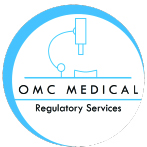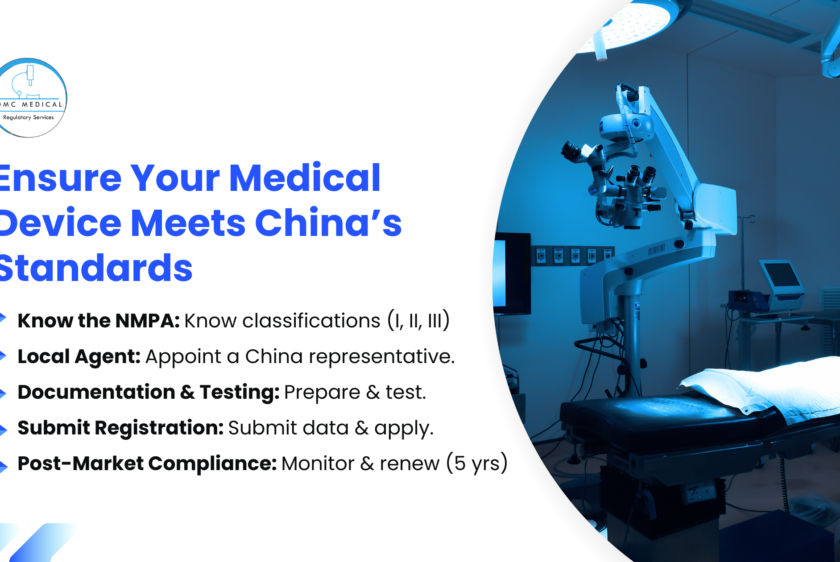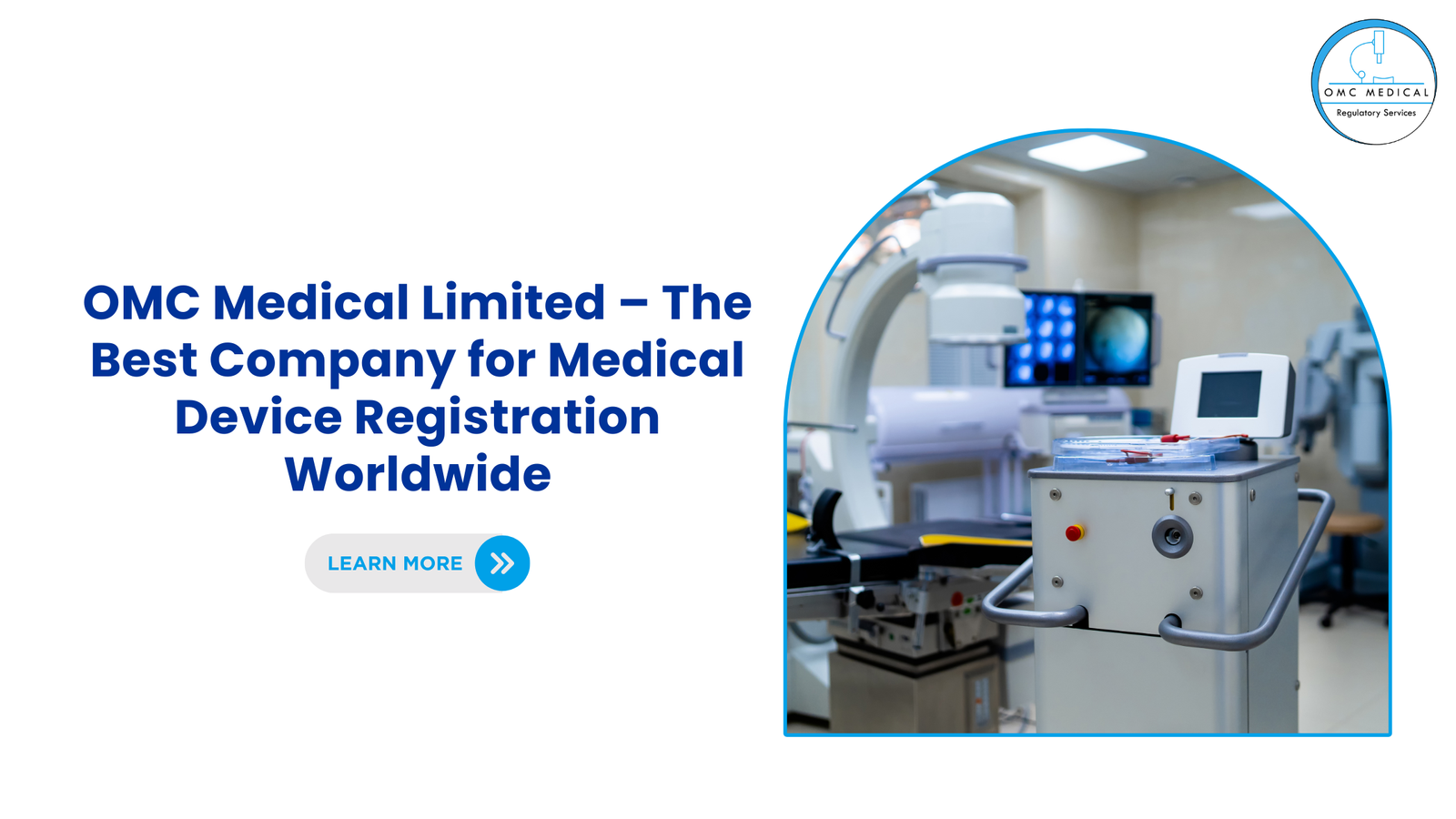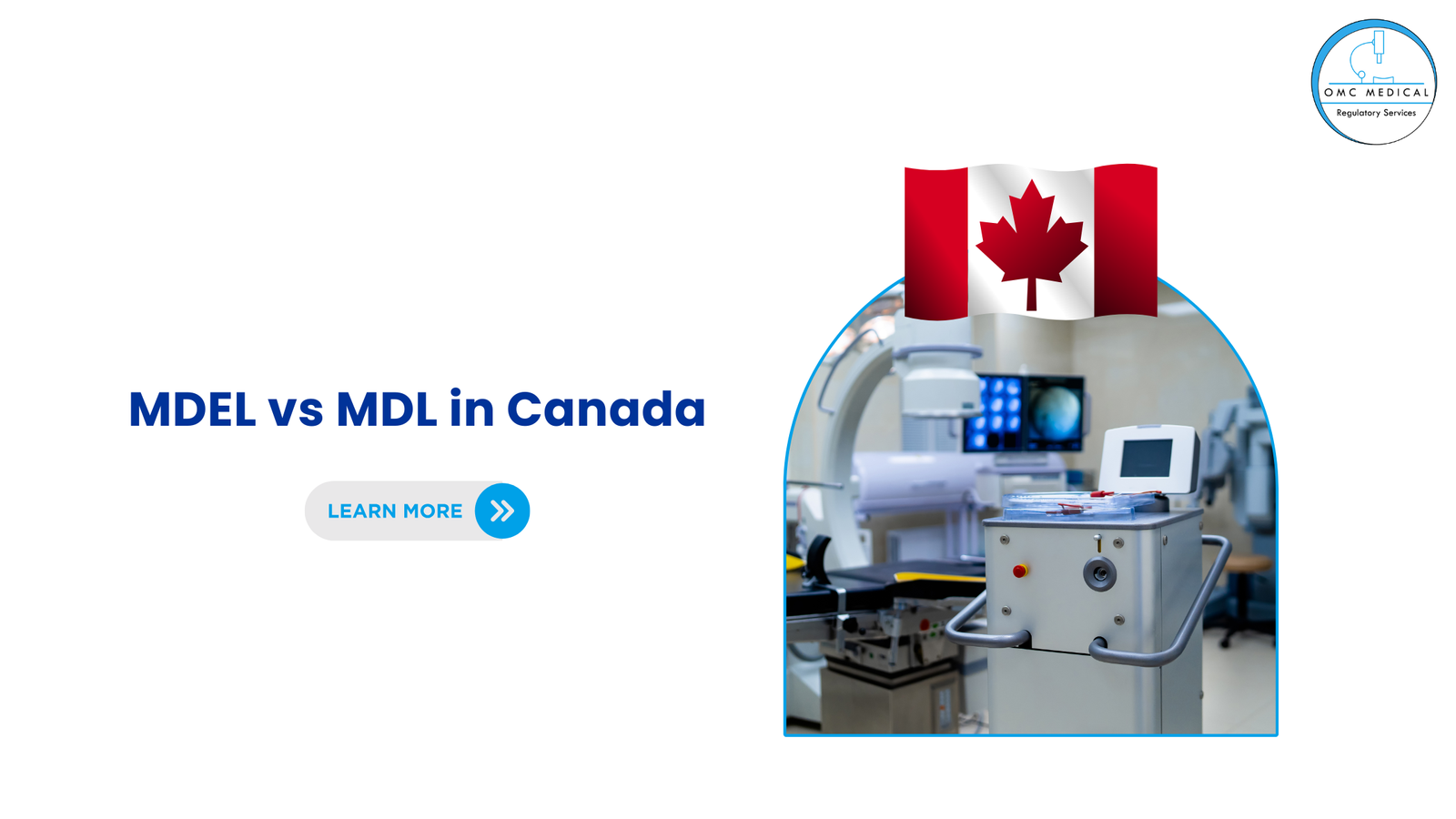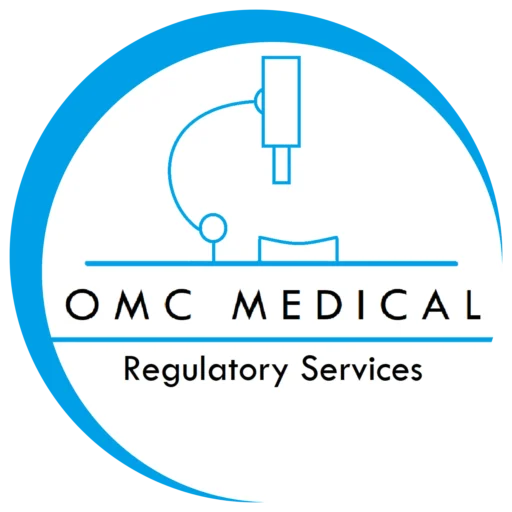China’s medical device market is one of the largest and fastest-growing in the world, making it an attractive destination for manufacturers. However, navigating the complex regulatory landscape set by the National Medical Products Administration (NMPA) can be challenging. This guide outlines the key steps to ensure your medical device complies with China’s regulatory requirements, from initial planning to post-market surveillance.
Key Regulatory Body:
- The National Medical Products Administration (NMPA), formerly known as the China Food and Drug Administration (CFDA), is the primary authority responsible for regulating medical devices in China.
- The NMPA operates under the State Administration for Market Regulation (SAMR).
Understand China’s Medical Device Classification
Medical devices in China are categorized into three classes based on risk level:
- Class I: Low-risk devices requiring a simple filing process.
- Class II: Moderate-risk devices requiring registration and technical review.
- Class III: High-risk devices subject to stringent regulatory controls, clinical trials, and in-depth evaluation.
Appoint a China-Based Legal Agent
Foreign manufacturers must appoint a China-based legal agent to handle regulatory submissions and act as the point of contact with the NMPA. The legal agent assists in communication, registration, and compliance matters. This representative is also responsible for adverse event reporting, recalls, and regulatory updates, making their role crucial in maintaining compliance.
Legal Agent Transfer Process
If a manufacturer needs to transfer its legal agent, the process typically takes about two months. The following documents must be signed, notarized, and submitted:
- Application Table
- Declaration of Standard Conformity
- Declaration of Authenticity
- Declaration of Conformity
- Letter of Authorization for Legal Agent
- Letter of Undertaking by Legal Agent
- Copy of NMPA Registration Certificate and its Attachment
- Copy of Previous Change Documents
- Declaration of Change
- Declaration of Legal Agent Change
- Copy of Business License of the Agent
The manufacturer only needs to provide a scanned copy of the NMPA registration certificate. Ensuring a smooth transfer process can help prevent compliance disruptions and maintain regulatory continuity.
Prepare Technical Documentation
Comprehensive technical documentation is crucial for registration and must include:
- Product Risk Analysis: Identifies potential risks and mitigations.
- Product Technical Requirements: Defines key performance and safety specifications.
- Testing Reports: Conducted by NMPA-accredited laboratories.
- Clinical Evaluation Materials: Either clinical trial data or justification for exemption based on equivalence.
- Instructions for Use (IFU) and Labelling: Must be in Chinese and comply with local labelling regulations.
- Quality Management System (QMS) Documentation: Compliance with China’s Good Manufacturing Practices (GMP) for medical devices.
It is essential to ensure that the technical documentation aligns with the latest NMPA requirements, as regulatory updates are frequent. Any inconsistencies can lead to delays or rejections.
Conduct Product Testing in China
For Class II and Class III devices, testing in an NMPA-designated laboratory is mandatory. Manufacturers must submit samples for performance and safety evaluation, ensuring alignment with Chinese standards (YY/GB standards). The test results are critical in demonstrating compliance with the technical specifications outlined in the application.
Manufacturers should work closely with the testing laboratory to ensure smooth processing. If discrepancies arise, additional testing may be required, leading to delays.
Complete Clinical Evaluation Requirements
Clinical evaluation is required unless an exemption applies. Manufacturers can submit:
- Clinical Trial Data: Conducted in China or accepted foreign clinical data with justification.
- Clinical Evaluation Report (CER): Demonstrating equivalence to an already approved device in China.
China’s clinical evaluation requirements can be stringent, especially for Class III devices. If clinical trials are needed, they must be conducted in compliance with China’s Good Clinical Practices (GCP). Early engagement with local clinical trial sites can help streamline the process.
Submit Registration Application
The registration dossier, including all required documentation, must be submitted to the NMPA. The review process includes technical evaluation, supplementary data requests, and potential on-site inspections. Upon approval, the NMPA issues a Medical Device Registration Certificate, valid for five years.
The review timeline varies depending on the device classification and the completeness of the submission. Manufacturers should be prepared for potential follow-up questions from the NMPA and ensure they can respond promptly.
Post-Market Compliance and Surveillance
Once on the market, manufacturers must comply with post-market surveillance requirements, including:
- Adverse Event Reporting: Timely reporting of any incidents.
- Periodic Risk Assessment Reports: Required for Class II and III devices.
- On-Site Inspections: The NMPA may conduct factory inspections to ensure compliance.
Failure to comply with post-market requirements can lead to penalties, suspension, or even revocation of registration. Having a robust post-market surveillance system in place ensures continued compliance and smooth market operations.
Renewing Registration and Handling Regulatory Updates
Medical device registration in China is valid for five years. Manufacturers must apply for renewal at least six months before the expiration date to ensure uninterrupted market access. The renewal process involves submitting updated technical documentation, compliance reports, and evidence of continued safety and effectiveness.
China’s regulatory landscape is dynamic, with frequent updates and policy changes. Manufacturers should monitor NMPA announcements and be prepared to adapt their compliance strategies accordingly. Regular engagement with regulatory consultants or industry associations can help stay informed.
Conclusion
In conclusion, successfully entering and operating in China’s medical device market requires a thorough understanding of its regulatory landscape. By following the outlined steps—such as proper classification, appointing a legal agent, preparing comprehensive documentation, conducting necessary testing, and ensuring ongoing compliance—manufacturers can effectively meet NMPA requirements.
For those looking for expert support, OMC Medical is here to assist. With our extensive experience in regulatory affairs and a deep understanding of the Chinese market, we can help simplify the compliance process and enhance your market access.
Contact us today!
